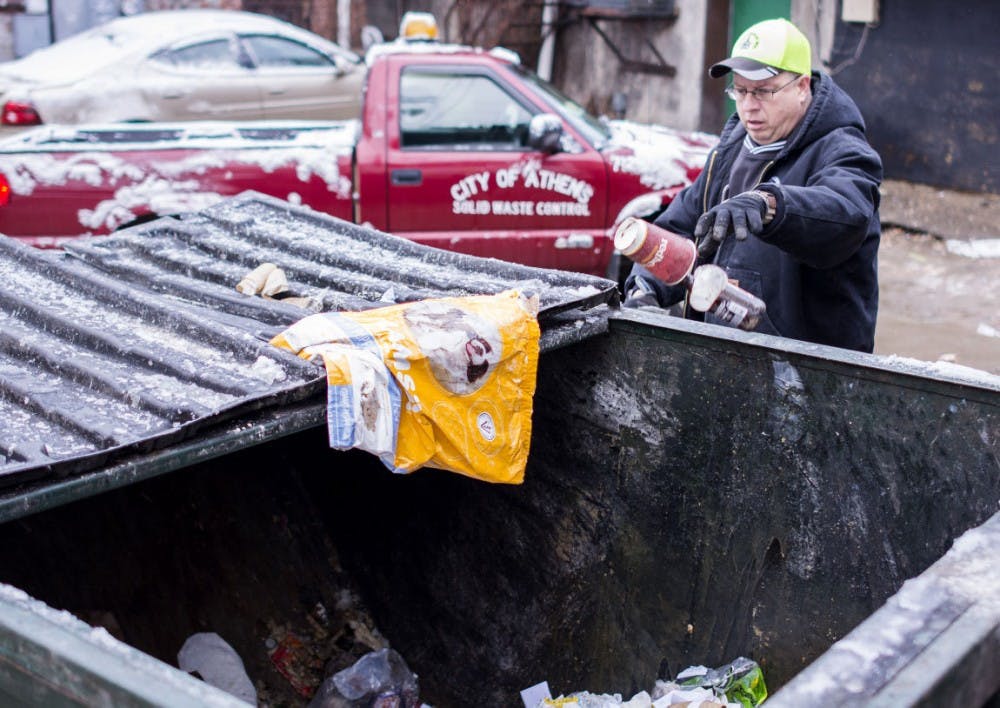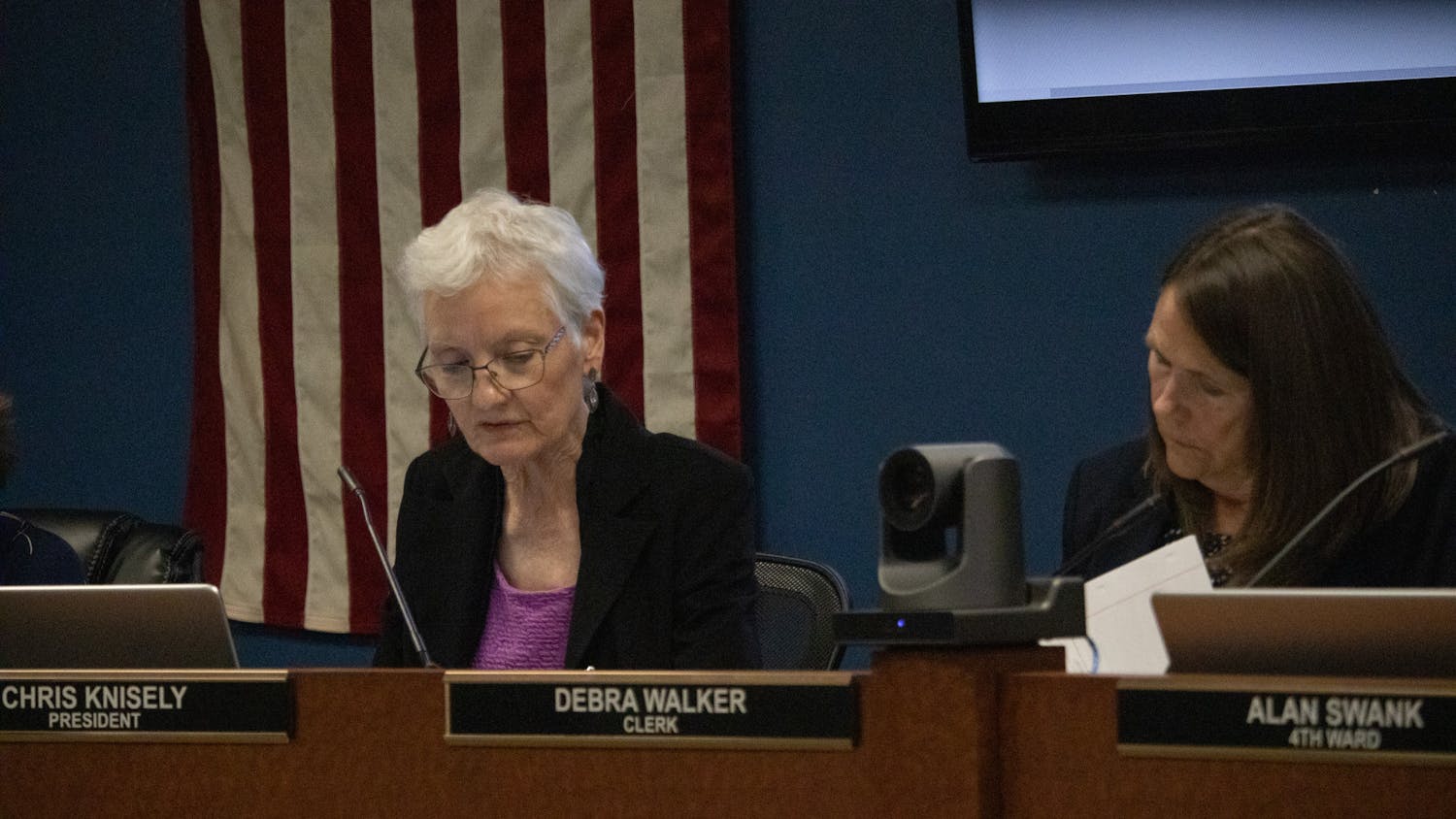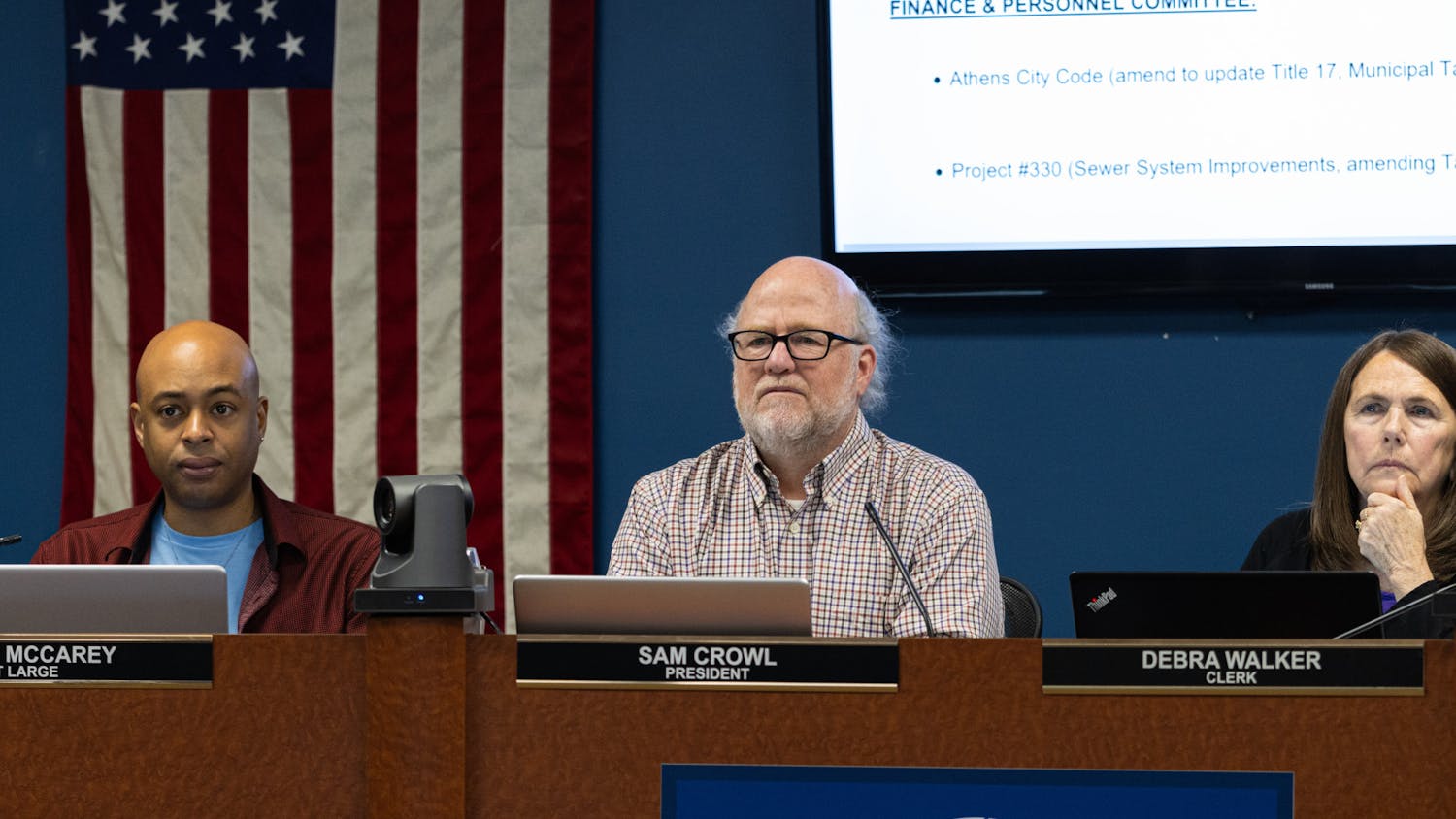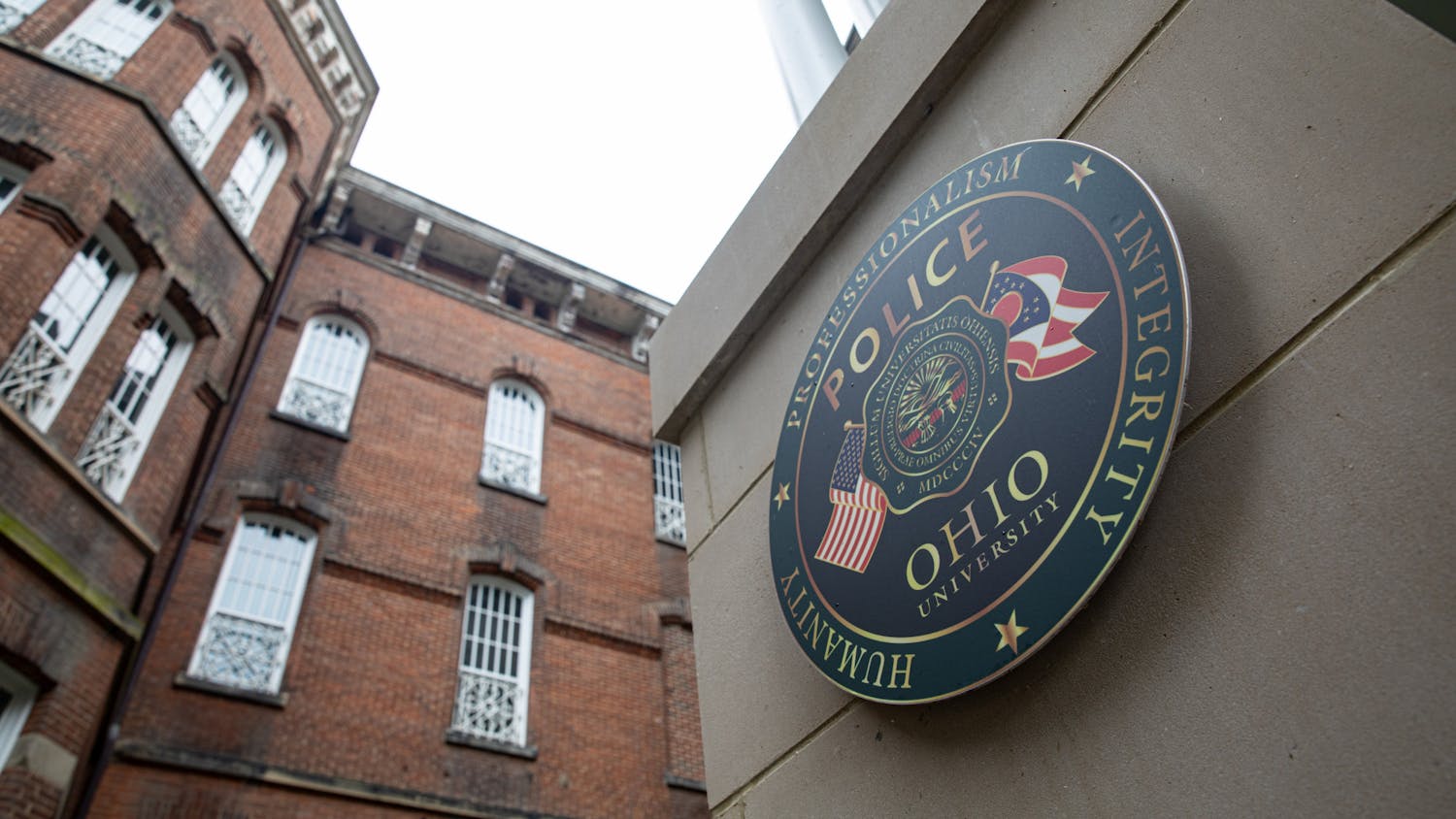Environmentally-friendly efforts have gained momentum on campus in the past decade.
Green is more than a color for environmentally-conscious Bobcats, and for the past decade it’s been a way of life on Ohio University’s campus.
Most recently, the addition of a Class II compost facility operated by the Athens Hocking Recycling Center near The Plains shows a step in the right direction when it comes to sustainability.
Sustainability is something that’s been a major concern in the OU community since 2005, when OU’s Office of Resource Conservation opened to promote energy conservation and sustainability efforts on campus, effectively triggering 10 years of eco-friendly initiatives.
Following a formal request from faculty, students, staff and concerned Athens residents, the Ohio University Ecohouse also opened in 2005 to residents interested in a sustainable, eco-friendly lifestyle.
The Ecohouse, a brick house on Dairy Lane, was transformed with a solar electric array, solar hot water system and a vegetable garden thanks to $60,000 in grant funding. And later, the Sugar Bush Foundation — an organization that works with OU to improve Appalachian life — funded a “Green House Project” which works with local landlords to weatherize student apartments.
Some of the university’s most creative environmentally-friendly functions included “Ohio Unplugged,” a renewable energy-themed music festival in 2006, and the “Trash Dance” hosted by OU student groups in 2008. These events helped make sustainability accessible to students and furthered the conservation conversation.
The Office of Resource Conservation became the Office of Sustainability in 2007, and President Roderick McDavis signed the American College and University Presidents' Climate Commitment, making it the first four-year public university in Ohio to sign a national environmental commitment to decrease its negative effects on the environment.
That same year, the Ohio Department of Natural Resources’ Division of Recycling and Litter Prevention awarded Ohio University $250,000 for an in-vessel composting system. Two years later, the installation of that composting system—the largest in-vessel composting system at any college or university in the nation— was completed.
OU made headway in 2011 with the adoption of the university's first formal sustainability plan under the direction of Interim Sustainability Coordinator Erin Sykes. And in 2012, the university completed construction on its compost facility expansion, allowing it to compost 100 percent of dining and kitchen waste collected in the dining halls and central food facility.
In 2013, Ohio University announced its Climate Action Plan, which set a goal of carbon neutrality for 2075. In March of 2015, Student Senate voted to support shortening that goal to December 21, 2030. At the same meeting, senators voted to transition the environmental committee to the environmental commission.
“Frankly, I think the carbon neutrality date of 2075 is an insult to future students of this university and is the perfect symbol of the Climate Action Plan being a plan that simply kicks the can further down the road rather than addressing and solving the issues at hand,” Grant Stover, Student Senate’s environmental commissioner and president of the Sierra Student Coalition, said.
Ohio University demonstrated its clean energy efforts in 2014 by scrapping plans to purchase a natural gas plant and creating a professional development program that aims to solidify relations between sustainability and building maintenance at OU by educating project managers and facilities staff. The Sustainable Investing Advisory Committee was also formed that year.
This year, OU shut down its steam plant for more than 10 days to allow for energy-saving repairs to the steam line.
Also, the first Sustainability Living Floor opened in Luchs Hall this fall, offering more programming and educational opportunities to students interested in learning about sustainable living.
“Sustainability is becoming more commonplace in departments campus-wide because we work hard to get our cause in the spotlight,” Laurie Cadmus, OU’s director of sustainability, said. “Now, it is common for a department to call us up and ask us for feedback on their efforts whereas a few years ago, we were doing the calling.”
Campus transportation also underwent eco-friendly changes recently by completing bike path repairs and adding a fleet of electric vehicle rentals and charging stations.
Ohio University received a “silver” rating on its first Sustainability Tracking, Assessment and Rating System (STARS) report, ranking its sustainability efforts at about the average for U.S. colleges. And this summer, the Sierra Club named OU 93rd out of the top 153 green schools in the nation.






